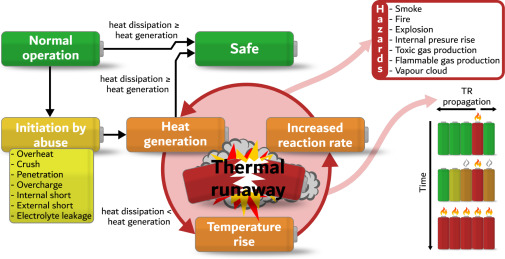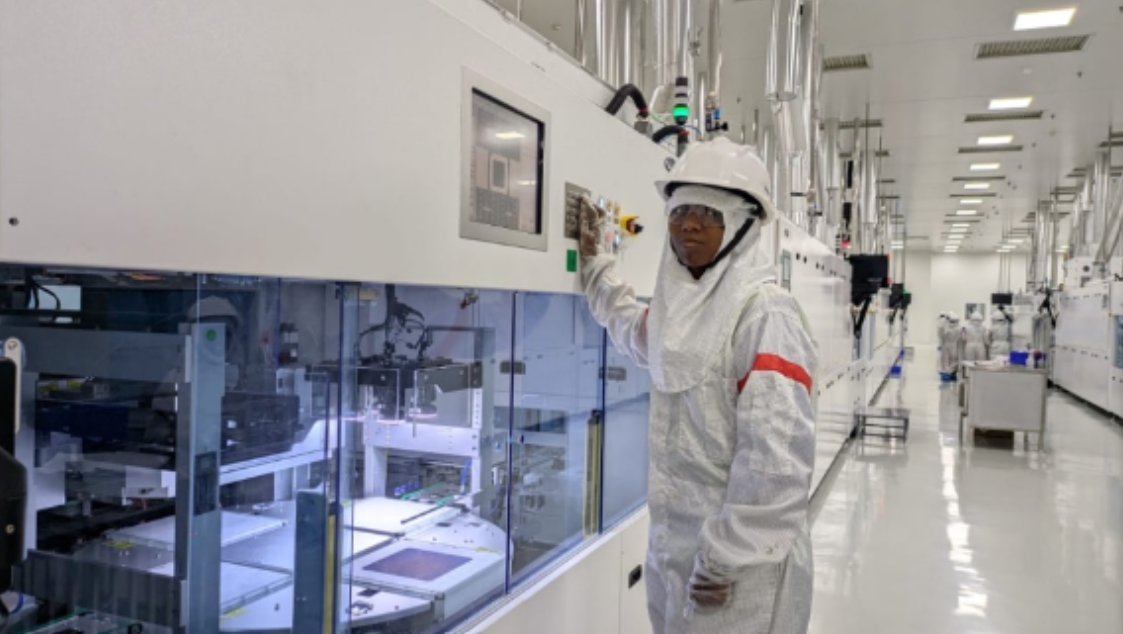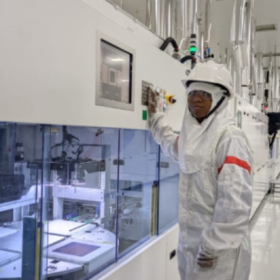It is often said that LFP batteries are safer than NMC storage systems, but recent research suggests that this is an overly simplified view.
In the rare event of catastrophic failure, the off-gas from lithium-ion battery thermal runaway is known to be flammable and toxic, making it a serious safety concern. But while off-gas generation has been widely investigated, until now there has been no comprehensive review on the topic.
In a new paper, researchers from the University of Sheffield, Imperial College London, and the University of St Andrews in the United Kingdom have conducted a detailed meta-analysis of 60 papers to investigate the most influential battery parameters and the probable off-gas characteristics to determine what kind of battery would be least hazardous.
They have found that while NMC batteries release more gas than LFP, but that LFP batteries are significantly more toxic than NMC ones in absolute terms.
Toxicity varies with state of charge (SOC). Generally, a higher SOC leads to greater specific gas volume generation.
When comparing the previous findings for both chemistries, the researchers found that LFP is more toxic at lower SOC, while NMC is more toxic at higher SOC. Namely, while at higher SOC LFP is typically shown to produce less off-gas than other chemistries, at lower SOC volumes can be comparable between chemistries, but in some cases LFP can generate more.
Prismatic cells also tend to generate larger specific off-gas volumes than offer cell forms.
The composition of off-gas on average is very similar between NMC and LFP cells, but LFP batteries have greater hydrogen content, while NMC batteries have greater carbon monoxide content.
To assess the fire hazard of each chemistry, the researchers calculated and compared the lower flammability limit (LFL) of the off-gasses. They have found that LFL for LFP and NMC are 6.2% and 7.9% (in an inert atmosphere) respectively. Given the LFL and the median off-gas volumes produced, LFP cells breach the LFL in a volume 18% smaller than NMC batteries.
“Hence LFP presents a greater flammability hazard even though they show less occurrence of flames in cell thermal runaway tests,” the researchers said.
They discussed their findings in “Review of gas emissions from lithium-ion battery thermal runaway failure – Considering toxic and flammable compounds,” which was recently published in the Journal of Energy Storage.
This content is protected by copyright and may not be reused. If you want to cooperate with us and would like to reuse some of our content, please contact: editors@pv-magazine.com.









By submitting this form you agree to pv magazine using your data for the purposes of publishing your comment.
Your personal data will only be disclosed or otherwise transmitted to third parties for the purposes of spam filtering or if this is necessary for technical maintenance of the website. Any other transfer to third parties will not take place unless this is justified on the basis of applicable data protection regulations or if pv magazine is legally obliged to do so.
You may revoke this consent at any time with effect for the future, in which case your personal data will be deleted immediately. Otherwise, your data will be deleted if pv magazine has processed your request or the purpose of data storage is fulfilled.
Further information on data privacy can be found in our Data Protection Policy.